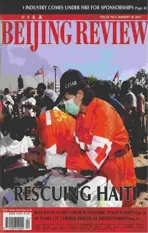MARKET WATCH
2010-12-06LIUYUNYUN
Last year was one of the most difficult periods for China’s economic development in the new century. Facing the global financial crisis, the government implemented a proactive fiscal policy and moderately loose monetary policy to fully implement and improve its stimulus packages. These efforts stopped the economy from sliding too far into negative territory and eventually allowed the national economy to recover quicker than anticipated.
According to preliminary estimates, the gross domestic product (GDP) for 2009 was 33.5 trillion yuan, up 8.7 percent. In terms of growth by quarters, it was up 6.2 percent for the first quarter and 7.9 percent, 9.1 percent and 10.7 percent for the second, third and fourth quarters, respectively.
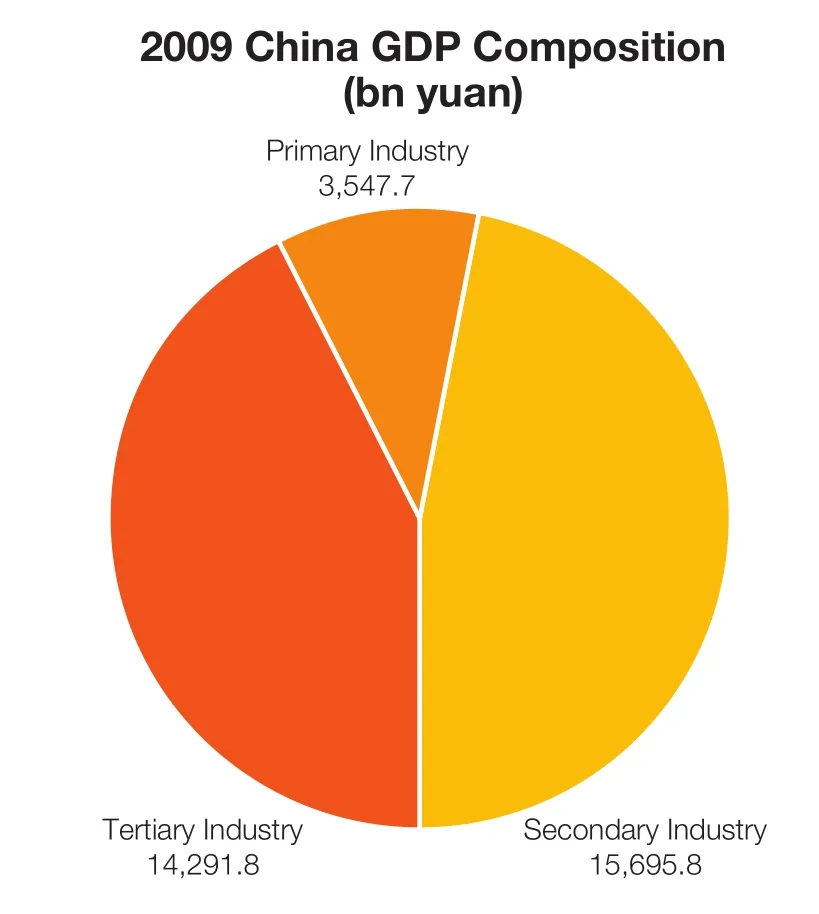
Agriculture
Agricultural production continued to develop steadily, increasing for the sixth consecutive year. In 2009, the total output of grain reached 530.82 million tons, an increase of 0.4 percent over the previous year.
Industry
Industrial production picked up on a quarterly basis, as pro fits reversed their sharp declines. In 2009, the added value of industrial enterprises above the designated size (all state-owned enterprises and non-state enterprises with annual sales revenue exceeding 5 million yuan) was up 11 percent from 2008.In the first 11 months of 2009, the profits made by industrial enterprises above the designated size reached 2.6 trillion yuan, up 7.8 percent over the same period of last year.
Fixed-asset Investment
Investment continued to grow and investment in areas related to people’s livelihoods increased noticeably. In 2009, total investment in fixed assets reached 22.48 trillion yuan, a year-on-year growth of 30.1 percent.
Retail Sales
Sales growth was steady and sales of selected products increased rapidly. In 2009,the total retail sales of consumer goods reached 12.5 trillion yuan, a growth of 15.5 percent.
CPI & PPI
The consumer price index (CPI) and producer price index (PPI) witnessed declines for the whole year. In 2009, the CPI was down 0.7 percent. The year-on-year change of producers’ prices for manufactured goods was also down 5.4 percent.
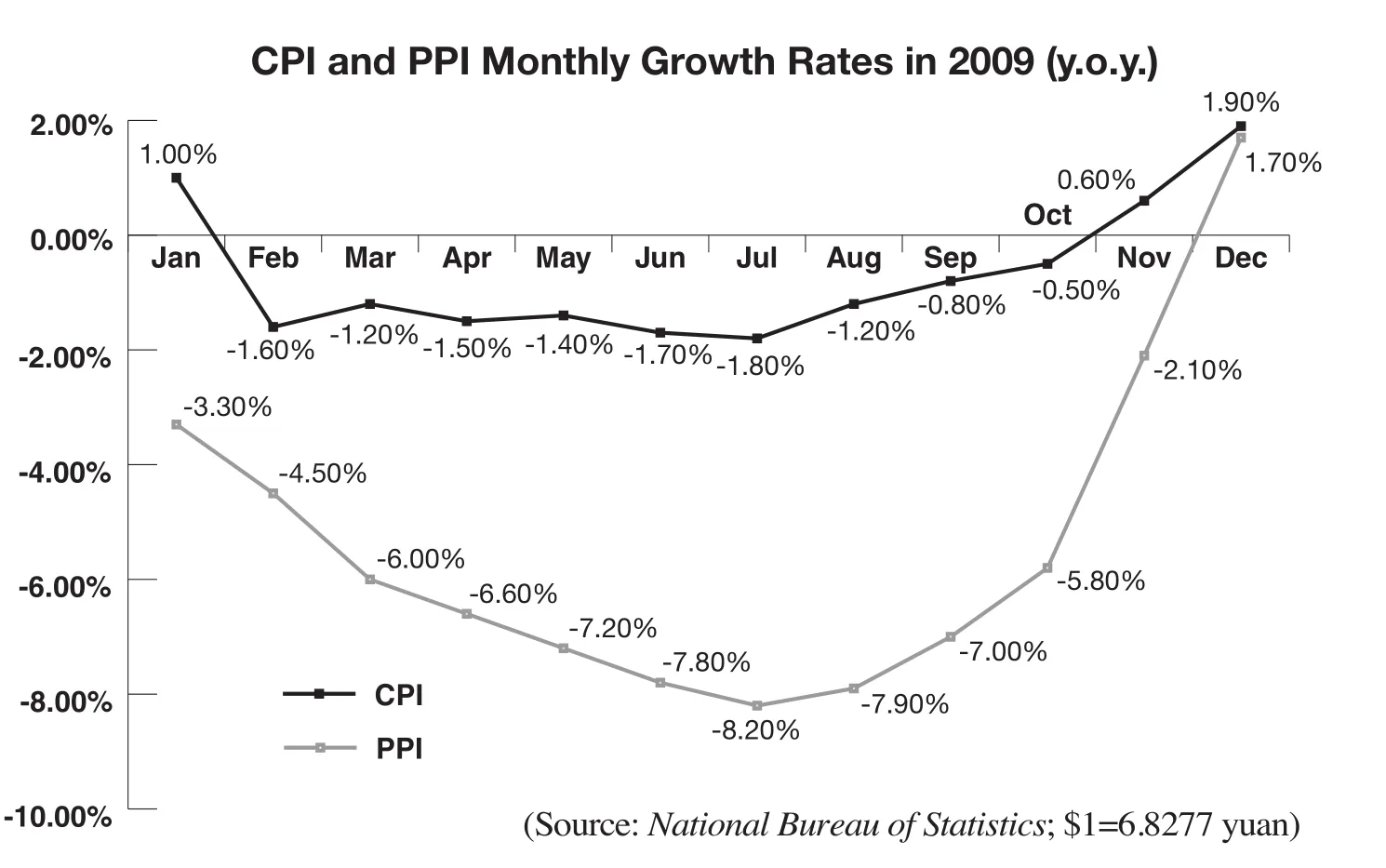
Numbers of the Week384 millionThe number of netizens in China reached 384 million at the end of 2009, while the number of cellphone Web users totalled 233 million at the end of 2009, according to the China Internet Network Information Center.
204 million tonsChina imported a total of 204 million tons of crude oil in 2009, growing 14 percent from that of 2008, according to information from the National Development and Reform Commission.
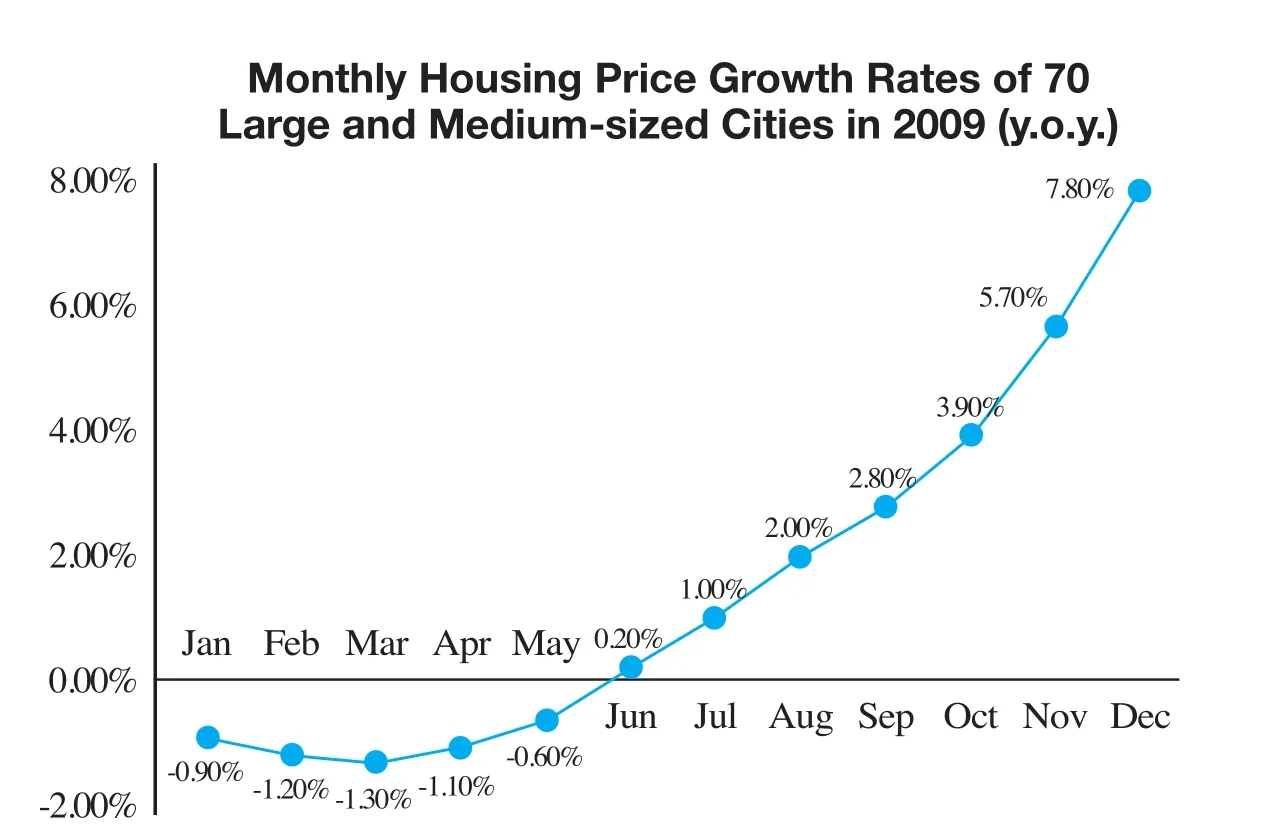
(Source: National Bureau of Statistics)
Foreign Trade
The total value of imports and exports dropped in 2009, shifting between increases and decreases. The total value of exports was$1.2 trillion, down 16 percent; that of imports was $1 trillion, down by 11.2 percent.China had a trade surplus of $196.1 billion,or $99.4 billion less than 2008.
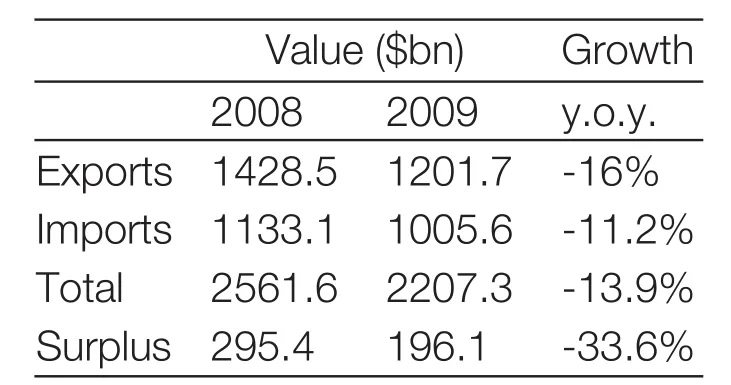
(Source: National Bureau of Statistics)
Resident Income
Urban and rural residents’ incomes increased as the employment situation was better than expected. In 2009, the per-capita disposable income of urban residents was 17,175 yuan, up 8.8 percent. The per-capita net income of rural residents was 5,153 yuan,up 8.2 percent year on year.
Money Supply
The money supply grew rapidly—newly added credits increased by a large margin.At the end of December, broad money (M2)totaled 60.6 trillion yuan, up 27.7 percent compared with 2008; narrow money (M1)totaled 22.0 trillion yuan, up 32.4 percent;and cash in circulation (M0) was 3.82 trillion yuan, a rise of 11.8 percent.
(Source: National Bureau of Statistics;$1=6.8277 yuan)
Airline Thriller
The collapse of Asia’s airline behemoth—Japan Airlines International Co. Ltd.(JAL)—rang alarm bells for its Chinese counterparts, who may also be secretly rejoicing to hear the news.
The Japanese state-owned JAL filed for bankruptcy protection on January 19, following the government’s decision to end cash injection.
The Chinese market used to account for 15 percent of JAL’s revenue.
Li Xiaojin, a professor at the Civil Aviation University of China, said domestic airlines, especially China Eastern Airlines Corp. Ltd., might devour a large portion of JAL’s market share. Li said if JAL wants to cut costs, it must reduce flights.
However, JAL’s downfall has also caused domestic airlines to wonder how they can avoid the same fate.
While high oil prices had a large impact on JAL’s bankruptcy, the deep-rooted cause was fierce competition from Japan’s highspeed railway network, said Li.
When Japan opened its high-speed railway network across the country in 1956,JAL turned its attention from the domestic market to more risky international markets.
The same is happening in China. In order to satisfy the increasing travel needs and driving economic growth, the government has poured money into the construction of high-speed railways.
On December 9, 2009, the world’s longest and fastest passenger railway—the Wuhan-Guangzhou high-speed railway—was put into operation, reducing the journey time between the two cities from 10.5 hours to three hours. A flight between the two cities takes two hours.
Railways have forced airlines to cut prices. In many cases, the price of an air ticket is even lower than that of a train. “The enemy is at the gate,” Li warned, fearing airlines may eventually leave the market.
Online Business Boom
In spite of concerns over the recovery of the real economy, online services fared well in 2009, growing a robust 30.7 percent from that of 2008 and outperforming other business modes.
On January 17, 2010, iResearch Consulting Group issued a report that said the scale of the Internet economy would reach 74.3 billion yuan ($10.8 billion) in 2009, up 17.4 billion yuan ($2.5 billion)from 2008.
iResearch said the fastest-growing Internetrelated business was online payment, which grew 110.2 percent in 2009 year on year. It was followed by online shopping, which rose 93.7 percent in 2009. The research report said e-commerce will become the most prominent business in the next few years.
The report estimated the Internet economy will reach 112.3 billion yuan ($16.4 billion) in 2010.
A report conducted by the China Internet Network Information Center said the top three Internet uses in 2009 were for online music, online news, and search engines.Meanwhile, online travel reservations, stock transactions, online banking services and online shopping also contributed to the Internet economic boom.
In China, the Internet coverage ratio reached 28.9 percent in 2009. Though it is growing at a remarkable speed, the coverage still lags far behind that of developed countries. The Internet coverage ratio in the United States and Japan is about 80-90 percent—a reminder that much needs to be done and explored in the vast Chinese market. ■
